Join New York Sea Grant (NYSG) for our Virtual Seminars, which we launched in June 2020 and continue to present.
This series features NYSG–supported researchers and topics and activities of interest to the New York State coastal community and stakeholders that our program serves.
All seminars are offered via Zoom (see below for more information) and Facebook Live (see www.facebook.com/nyseagrant).
All seminars are recorded and later made available on our YouTube Channel, www.youtube.com/nyseagrant.
Seminar Archive: Fall 2019 - Winter 2020
November 19, 2020
12 – 1 pm
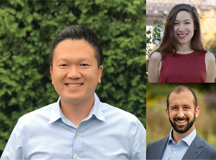 Peter J. Park1, Isa Del Bello2 and Christopher Girgenti3
Peter J. Park1, Isa Del Bello2 and Christopher Girgenti3
Farmingdale State College1, Brooklyn Bridge Park Conservancy2 and Randall’s Island Park Alliance3
"From Anchovies to Mangrove Snapper: The Origin Story of the NYC East River Fish Database"
In this seminar, the principal investigators put a spotlight on one of NYSG's Marine and Coastal District small grant projects, a New York State Department of Environmental Conservation (NYSDEC) partnership effort.
The area of study is New York City’s (NYC) East River, a tidal strait that famously connects four of the city’s five boroughs. New York City’s East River is a tidal strait that famously connects four of the city’s five boroughs.
In 2019, a team of East River environmental education organizations formed the East River Ichthyological Alliance (ERIA) to document and explore the East River’s fish diversity through the establishment of the East River Fish Database.
This work brought together the efforts of environmental education organizations, public program participants, recreational anglers, and for-hire fishing operations, with the aim of archiving fish faunal data and uniting the city’s fish enthusiasts. Between April 1-December 1, 2019, nearly 50 fish species from 9,279 individual fish were recorded from public programs (e.g., seining, angling, trapping) and validated reports by anglers and fishing charters.
Funding also supported the establishment of innovative NYC beginners-level and intermediate-level public fishing clinics and marine education workshops that integrated angling and ichthyology (the study of fish).
NYC fish community science has innumerable goals, including environmental education, exposure to scientific research, ownership of the scientific process, and collectively monitoring biodiversity.
Moving forward, ERIA and its partnerships with public participants and the angling community serves as a model for other communities and waterbodies to build lasting connections between stakeholders and the health of their waters.
This project was supported by a partnership between NYSG, NYSDEC, and the Marine and Coastal District of New York Conservation, Education, and Research Grants Program. Funding is supported from the Marine and Coastal District License Plate which is administered by the Marine and Coastal District of New York Conservation, Education and Research Board, and authorized through NYS Environmental Conservation Law Article 13, Title 5 Section 13-0503.
Some Stories of Interest:
Funding Announced for Recreational Fishing Projects in Local Communities (October 2019)
2019 Marine Small Grants Projects (September 2019)
On YouTube: Small Grant Project Supports Fishing Clinic in Brooklyn (July 2019)
More Info: www.nyseagrant.org/marinesmallgrants
November 13, 2020
11:45 am – 1 pm
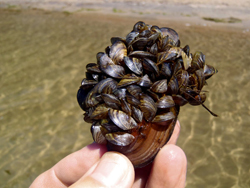 Dr. David Lodge
Dr. David Lodge
Cornell University
"Knowledge to Action on Invasive Species"
On Friday, November 13th New York Sea Grant (NYSG) hosted Stony Brook University's School of Marine and Atmospheric Sciences colloquium speaker, Dr. David Lodge. The virtual talk, "Knowledge to Action on Invasive Species," was held on Zoom from 11:45 am - 1 pm.
Lodge — a professor in the Department of Ecology and Evolutionary Biology at Cornell University and the Francis J. DiSalvo Director of the Cornell Atkinson Center for Sustainability — is one of the world’s leading experts on invasive species. He has extensive research experience in freshwater ecology, invasive species biology and bioeconomics, ecological risk analysis, global changes and biodiversity, and environmental ethics and policy. His research combines basic and applied ecological research to contribute to the conservation of the world’s freshwaters, with a particular emphasis on the causes, effects, and management of biological invasions.
Setting the scene for the discussion was the invasive subset of almost 200 nonindigenous species in the North American Great Lakes, which cause at least $200M in annual damages. Those and the many other damages from invasive species throughout the world have unfortunately mostly been accepted as a necessary by-product of global trade. But recent innovations are reducing invasions from ships, and from commerce in living organisms, while simultaneously increasing net economic benefits.
Lodge's most recent NYSG-funded research project, a two year Lake Ontario and Lake Erie-focused study that began in 2018, zoomed in on the development of an inexpensive environmental DNA-testing method for the earlier detection of aquatic invasive species and co-detection of multiple species to assist coastal resource managers at less cost than current detection methods.
These new DNA-based technologies that provide improved early detection tools, if combined with large-scale eradication and control technologies, open the door to a virtuous cycle of innovation, business opportunity, and environmental protection. Such a virtuous cycle will be hastened and enhanced by co-creation of research with decision-makers in the public and private sectors.
PHOTO: A cluster of invasive zebra mussels attached to a native freshwater mussel. Such infestations lead to the larger mussel’s death. Credit: D. P. Molloy/University at Albany.
Seminar Archive: Summer 2020
Here's the playlist from the Summer 2020 season.
And, below that, is information on the individual seminars in the series (appearing with most recent ones first). These can also be streamed via embedded video ...
September 24, 2020
12 – 1 pm
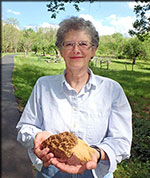 Dr. Karin E. Limburg and Kayla Smith
Dr. Karin E. Limburg and Kayla Smith
SUNY College of Environmental Science and Forestry
"Reconnecting Waters for Eels and River Herring: Public Perceptions of Dam Removal in the Hudson-Mohawk Watershed"
In this fourth talk in the series, Ms. Kayla Smith, a PhD candidate at SUNY College of Environmental Science and Forestry, discussed her dissertation research in the Hudson-Mohawk watershed working with community groups to determine “barriers and bridges” to dam removal in order to restore historic diadromous fish runs (i.e., river herring and the American eel).
“Diadromous” refers to the fact that these fish species require both inland and marine habitats to complete their life cycles. These species are in decline, in large part due to loss of access to vital riverine habitats that are now blocked by dams.
The participation of stakeholders in workshops and interviews have proven invaluable to our understanding of community-level interest and concerns towards aquatic connectivity efforts in New York’s largest estuary. These conversations will ultimately help to inform state-level decision making for dam removal projects that benefit people and biodiversity.
Some Stories of Interest:
New York Sea Grant Research: Results and Impacts (March 2020)
New York Sea Grant Announces New Omnibus Research Projects (Summer 2016)
Marine Science Experts Discuss Eel Aquaculture Partnership (November 2014)
August 20, 2020
12 – 1 pm
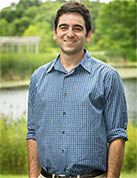 Dr. Scott Steinschneider
Dr. Scott Steinschneider
Cornell University, College of Agriculture and Life Sciences
"A Probabilistic, Parcel-Level Inundation Prediction Tool to Support Community Preparedness to Flooding along Lake Ontario"
The third seminar in our Summer Virtual Seminar Series was presented by Cornell University's Dr. Scott Steinschneider, who discussed the development of a flood risk management tool for Lake Ontario communities.
Lake Ontario has experienced two record-setting floods over the course of three years (2017-2019). These floods have left shoreline communities unsure of how best to assess their flood risk and manage future flood events.
The tool can provide actionable flood risk information for short-term emergency management at local scales. It was designed based on stakeholder needs and guidance. Model predictions in the tool are accurate, with the potential for further improvement by focusing on key processes. This model is one component of a suite of tools being developed by New York Sea Grant to support shoreline communities.
The goal of the tool is to provide community planners and property owners with a conservative, parcel-level assessment of flood risk to help inform short-term emergency response and better prepare for future flood events.
Some Stories of Interest:
NY Sea Grant and Cornell Professor Introduce Lake Ontario Parcel-Level Flood Risk Prediction Tool (July 2020)
A story map highlighting 2017's Lake Ontario Water Level Impacts (April 2020)
NYSG Publishes NY Great Lakes Coastal Resilience Index (January 2020)
NYSG's Coastal Community Development Program its Resources page
features more on both "High Water Impact Surveying" and "Tools"
Lake Ontario Inundation Mapping Tools Now Available from NYSG (June 2019)
NYSG Posts High Water Level Survey Results, Resources (April 2018)
July 23, 2020
12:30 – 1:30 pm
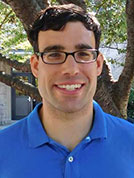 Dr. Jase Bernhardt
Dr. Jase Bernhardt
Hofstra University
"Developing a Virtual Reality Video Game to Simulate Rip Currents"
For the second seminar in our Summer Virtual Seminar Series, Dr. Bernhardt discusses the use of virtual reality (VR) to communicate to beachgoers the dangers of rip currents.
Rip currents - narrow channels of fast-moving seawater that pull swimmers away from the shore - kill around 100 beachgoers each year according to the United States Lifesaving Association (USLA). On average, 80% of all lifeguard rescues at surf beaches can be attributed to rip currents.
Research has shown that the public has a limited understanding of the danger of rip currents and the proper actions to take to escape when caught in one. Dr. Bernhardt and his team developed a VR simulation that allows the participant to feel as if they are in a rip current.
The objective was to test the effectiveness of the tool at teaching beachgoers how to escape from a rip current. The VR simulation tool was used to survey beachgoers on Long Island during summer 2019. The actions participants took when confronted with the rip current were recorded, along with whether they escaped. An interview with each participant was also conducted after the simulation to determine the realism of the rip current simulation and its effectiveness in demonstrating the proper actions to take when caught by one. Analysis of the results indicates that VR has the potential to communicate rip current risk and ways to minimize it in a unique and engaging manner.
Also, there's a Summer 2020 social media campaign on beach safety during the COVID-19 pandemic at www.nyseagrant.org/beachsafely.
Some Stories of Interest:
On YouTube: Using Virtual Reality to Learn How to Escape a Rip Current (July 2019)
New York Sea Grant Provides Resources to Avoid Rip Current Dangers (June 2019)
June 25, 2020
12 – 1:15 pm
 Dr. Christopher Gobler
Dr. Christopher Gobler
Stony Brook University, School of Marine and Atmospheric Sciences
"New Approaches to Decoding Brown Tide in Long Island Estuaries"
Brown tides, caused by Aureococcus anophagefferens, have been plaguing Long Island estuaries for 35 years. To date, multiple hypotheses have been put forth to explain the occurrence of these events.
Effective management strategies requires understanding the causes of these blooms. With funding from the NOAA Ecology and Oceanography of Harmful Algal Blooms (ECOHAB) program, this project examined transcriptomes, the complete set of RNA transcripts that are produced by the genome of an organism under specific condition, to determine the causes of brown tides, with the goal of developing more effective management strategies.
In 2016, the Gobler Lab sampled a brown tide during the initiation, peak, and collapse phases of the bloom, while concurrently measuring several environmental parameters and new molecular markers of cellular processes. They also conducted experiments to explore how changes in nutrients and zooplankton grazing alter cell numbers and specific molecular markers in the brown tide organism, as well as competing algae. The results to be presented in this seminar provide a novel insight into how brown tides develop and are sustained.
Another highlight of this seminar: New York Sea Grant, the Suffolk County Department of Health and their partners are asking for your help to document occurrences of Harmful Algal Blooms in NY's marine waters: www.nyseagrant.org/reportHABs.
Some Stories of Interest:
New York Sea Grant Research: Results and Impacts (March 2020)
Reporting Suspicious Marine Algal Bloom (May 2020)
More Info: New York Sea Grant
New York Sea Grant (NYSG), a cooperative program of Cornell University
and the State University of New York (SUNY), is one of 34 university-based
programs under the National Oceanic and Atmospheric Administration’s
National Sea Grant College Program.
Since 1971, NYSG has represented a statewide network of integrated
research, education and extension services promoting coastal community
economic vitality, environmental sustainability and citizen awareness
and understanding about the State’s marine and Great Lakes resources.
Through NYSG’s efforts, the combined talents of university scientists
and extension specialists help develop and transfer science-based
information to many coastal user groups—businesses and industries,
federal, state and local government decision-makers and agency managers,
educators, the media and the interested public.
The program maintains Great Lakes offices at Cornell University, SUNY
Buffalo, SUNY Oswego and the Wayne County Cooperative Extension office
in Newark. In the State's marine waters, NYSG has offices at Stony Brook
University in Long Island, Brooklyn College and Cornell Cooperative
Extension in NYC and Kingston in the Hudson Valley.
For updates on Sea Grant activities: www.nyseagrant.org has RSS, Facebook, Twitter, Instagram, and YouTube links. NYSG offers a free e-list sign up via www.nyseagrant.org/nycoastlines for its flagship publication, NY Coastlines/Currents, which is published quarterly. Our program also produces an occasional e-newsletter,"NOAA Sea Grant's Social Media Review," via its blog, www.nyseagrant.org/blog.